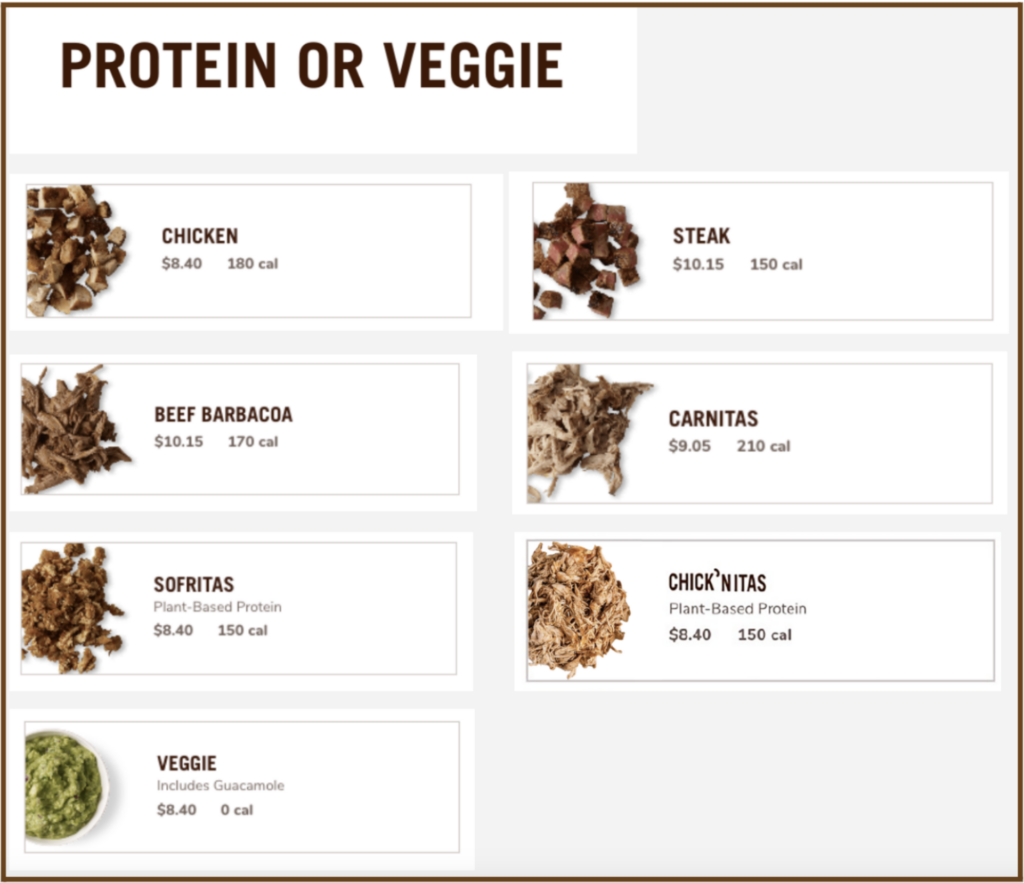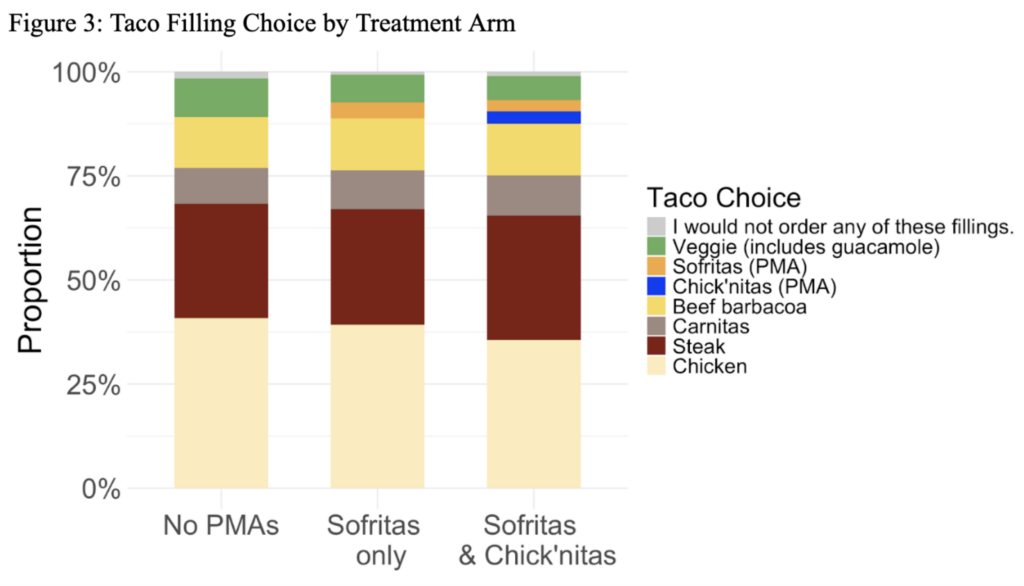
A new study showed people a mock Chipotle menu with and without plant-based options to see whether it affected their decisions to choose meat. The results go against the grain.
Will seeing more plant-based options on the menu make you less inclined to eat meat at a restaurant?
It’s a question that researchers at the Stanford University School of Medicine contended with in a new study of nearly 4,500 participants.
“It is not yet known whether the presence of a plant-based meat analogue on a menu reduces the consumption of meat, or alternatively, whether it is mainly consumed by vegetarian and vegan eaters who would not otherwise have eaten meat,” they wrote.
“Furthermore, although plant-based meat analogues are designed and marketed to replace specific animal meats (e.g., beef burgers or pork sausages), it is unknown whether [they] especially reduce consumption of their intended meat counterpart.”
To test the theory, the researchers reproduced the menu of Chipotle, except they customised the number of vegan alternative options available, from none, to one (Sofritas, a braised tofu dish), to two (Sofritas and a fictitious “chick’nitas” dish).

Offering more plant proteins reduced demand for veggies, not meat
On the copycat Chipotle menu, the researchers described both the plant protein options as having 150 calories, the same as steak, and a price of $8.40, at parity with chicken as the cheapest menu items. For the Chick’nitas, they used a photo of shredded chicken to match the appearance.
Of those who saw a menu with neither of the plant protein options, 89.1% chose an animal protein, while 9.2% opted for the veggie and guacamole filling in their taco (the rest declined to order).
But there was no real change when the plant-based proteins were added to the menu, with meat being chosen by 88.8% of consumers when Sofritas was available, and 87.6% when both Sofritas and Chick’nitas could be chosen.
“Total meat consumption remained unchanged. Instead, plant-based meat analogues primarily replaced demand for other plant-based options,” the researchers wrote.
Indeed, the addition of plant proteins took the choice share away mainly from the veggie option, which was opted for by 6.6% of people when Sofritas was available, and 5.7% when Chick’nitas was also part of the menu.

Consumer perceptions about taste, texture and processing at play
The researchers pointed out several reasons why adding meat alternatives may not reduce demand for animal proteins. “Many consumers may harbour negative expectations about the taste or texture of plant-based meat analogues. Additionally, individuals not already motivated to avoid meat may find little reason to change, especially if plant-based meat analogues are seen as overly processed or misaligned with personal values,” they wrote.
The phenomenon of ‘satisficing’ – where consumers just pick the first acceptable or familar menu item when faced with a choice overload – may play a role too, they noted.
The findings contradict common wisdom. In 2024, the World Resources Institute compiled a list of 90 techniques that can help foodservice players ‘nudge’ plant-based behaviours among diners. Some of the most effective strategies include chef training to improve the quality of vegan meals, integrating meat-free options into meat sections in displays, using indulgent and appealing language to describe them, and increasing the variety of plant-based dishes on offer.
Moreover, one study this year found that few people would choose meat analogues when given an option of beef, falafels and veggie burgers, a figure that remains low even when the animal protein option is taken out. But what can transform choice is price – not parity, but actively undercutting the cost of meat.
The Chipotle-focused research put the plant protein option at the same price as chicken, but it would be interesting to see whether the results change if the Sofritas and Chick’nitas had a lower cost attached to them.
Vegan meat alternatives remain a “potentially valuable tool for advancing plant-based diets”, but the researchers highlighted the need for further research on how to increase their consumption, potentially via educational, narrative, or taste-test interventions. Future studies should also consider whether these products “should be positioned as replacements for, rather than supplements to, existing meat entrées”.
The post Stanford Study: Does Adding More Plant-Based Options Make People Choose Less Meat? appeared first on Green Queen.
This post was originally published on Green Queen.